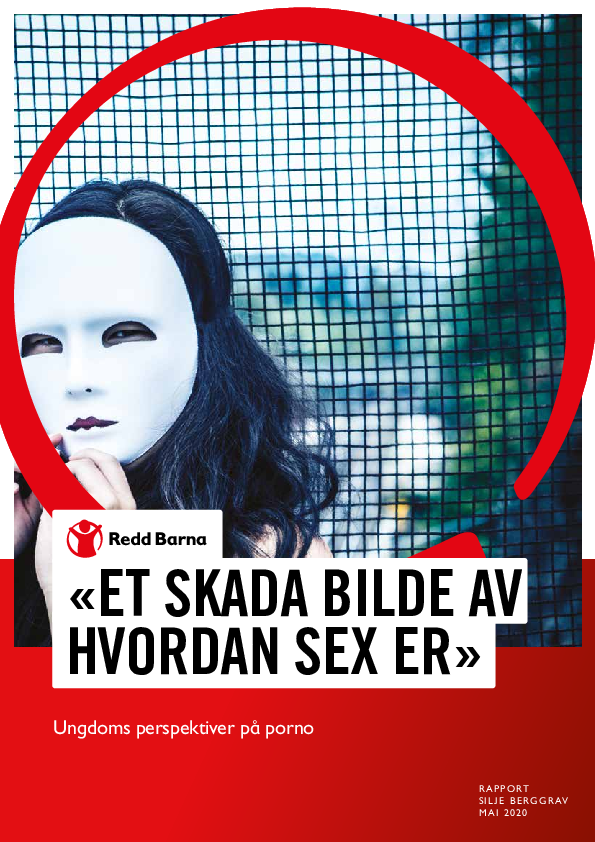
Reports
“Internett er et Stort Mørkt Rom”: Håndtering av risiko for seksuell utnytting over internett på barnevernsinstitusjon
Publication year:
2020
Norwegian
Format:
pdf (416.8 KiB)
Publisher:
Save the Children Norway
Throughout history, technological development has had a major impact on society as a whole. Today we find that access to the internet is ubiquitous, and in recent years this has touched the lives particularly of children and young people. As most young people in Norway own a smartphone, the web has become significantly more integrated into their lives, bringing with it many new opportunities. At the same time, it can lead to challenges, including the increased incidence of sexual offences committed against children over the internet. There is reason to believe that children and adolescents living in child welfare institutions are particularly vulnerable to such offences. For example, they have less guidance from safe caregivers, and their challenging life experiences make them search for affirmation and attention – behaviours that expose them to the risk of online sexual offences.
In order to gain greater insight into what these institutions are doing to protect children from such abuse, we have interviewed those who have direct experience: staff working in child welfare institutions. Through these conversations, we find that many child welfare staff are concerned about how to handle the risk of sexual exploitation over the internet for the benefit of the child. Many feel that they lack the insight and competence to handle the risk adequately. Some encounter technical barriers, and several are afraid of the adolescents’ strong reaction to having their access to the internet restricted. The work and living situation can be another barrier, with high staff numbers, high turnover and short stays that do not allow for intimate conversations and guidance. In addition, they are concerned about depriving residents of access to necessary resources. They are uncertain about what they are allowed to do, and believe that the regulations they operate within are not adjusted to technological developments. They have a wide range of considerations that need to be balanced when they are concerned about a child, and the balance between limiting risks on the one hand and ensuring the child’s freedom and participation on the other is perceived as particularly difficult.
We find that the challenges and considerations that staff members are faced with result in a large variation in risk management. Some monitor, control and use force, while others confiscate and regulate. Some restrict access sometimes, for example at night. Many staff members talk, listen and make house rules together with the young residents, while some find the challenges so unmanageable that they take a more passive approach. In summary, we see that the majority end up somewhere between limitation and liberty, and manage risks with mild regulations when there is obvious danger, but not otherwise. Common to everyone we have interviewed is that they believe there is a real risk that young people staying in the institution could be sexually exploited over the internet and that staff members are not able to manage this risk as well as they wish.
Furthermore, this report contains our reflections on the cause of the challenges that child welfare staff face when managing risk, and we present suggestions for further work. First, we point out that the regulation of rights does not take into account how ubiquitous and integrated the internet is in children’s lives today, and we recommend that it be further explored whether it fulfills its purpose in preventing sexual exploitation over the internet. Furthermore, we recommend that institutions be provided with sufficient frameworks and resources to develop measures that increase children’s safety. We request that measures to manage the risk of sexual exploitation over the internet be given the priority that corresponds to its extent and severity, and that staff members are given adequate support, guidance and time to prioritise it. Finally, we point out that it will always be challenging to balance the need to protect children by restricting their access to the internet, and safeguarding their right to participation, privacy, information, and contact with friends and family. Technological developments have led to such extensive changes that a review of existing legislation and guidelines for children and young people in institutions is necessary. This must be based on research on the protection of children from online sexual abuse, on the vulnerability of children and adolescents living in institutions in particular, as well as the consequences of restricting and regulating young people’s access to the internet.
Read full abstract
View & Download
Document information
Publisher
Format
Content type
Country
Region
Topics
Rights
© Author/Publisher
Found a mistake? Help us improve!
If you have noticed a document assigned to the wrong author or any other inaccuracies, let us know! Your feedback helps us keep our data accurate and useful for everyone.
Related Documents
Share
Link

